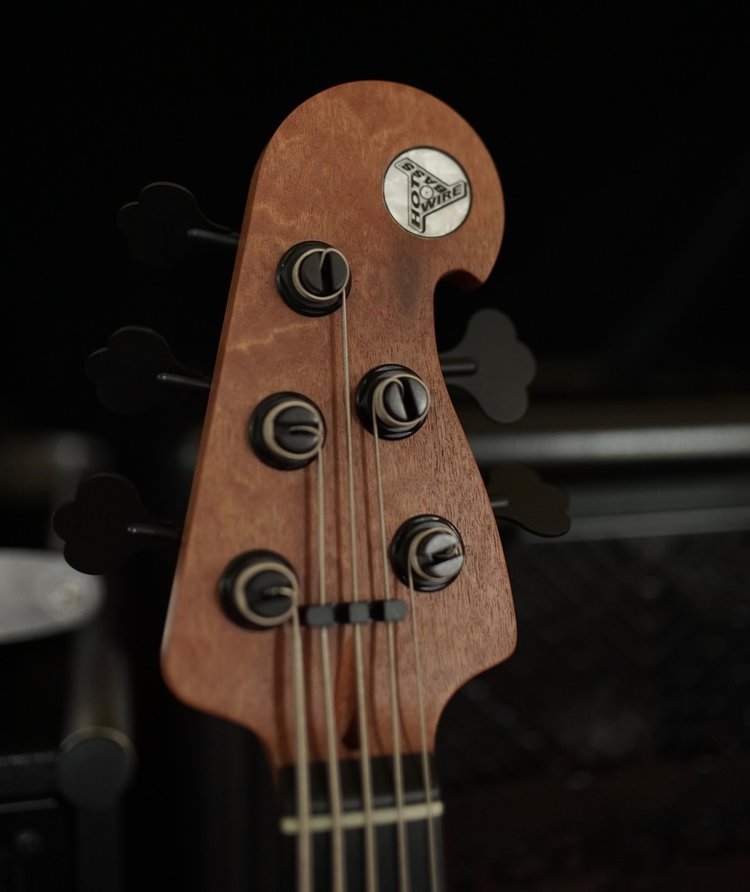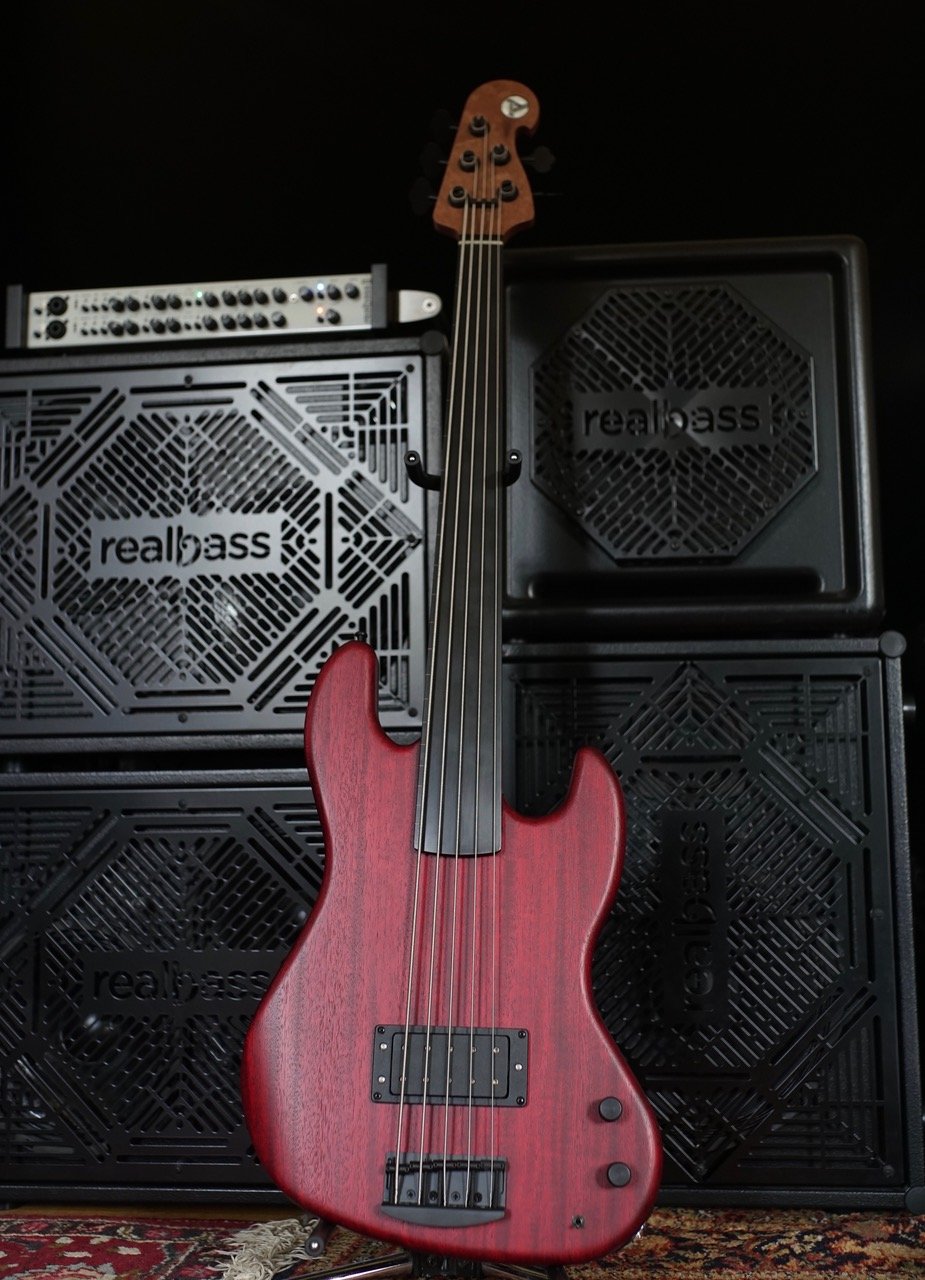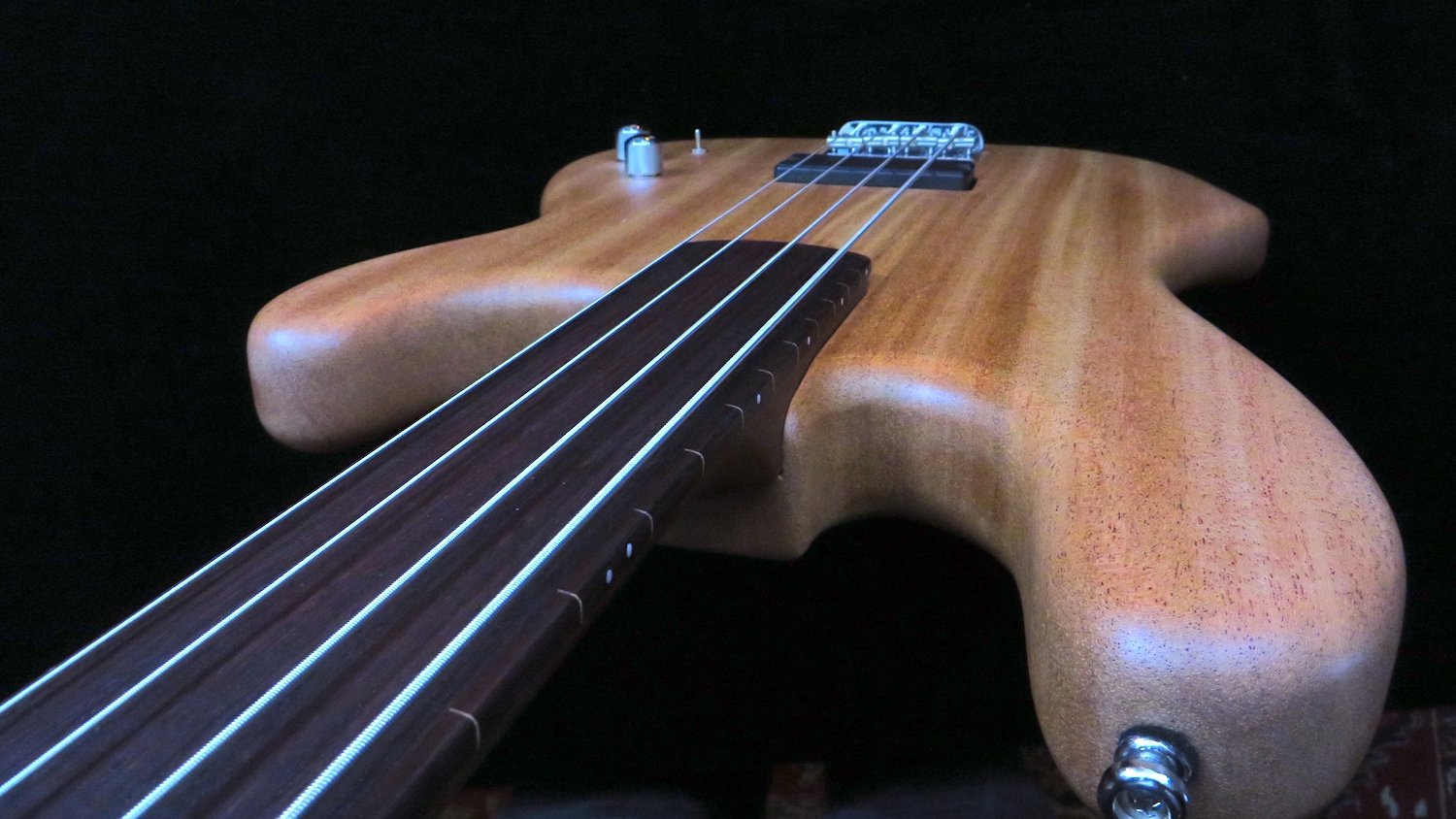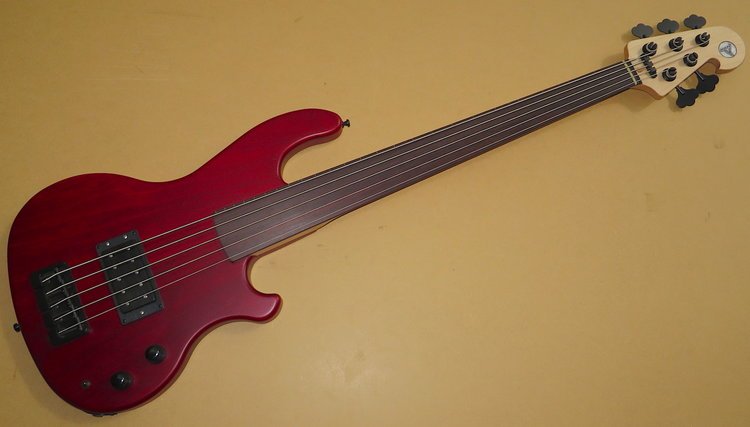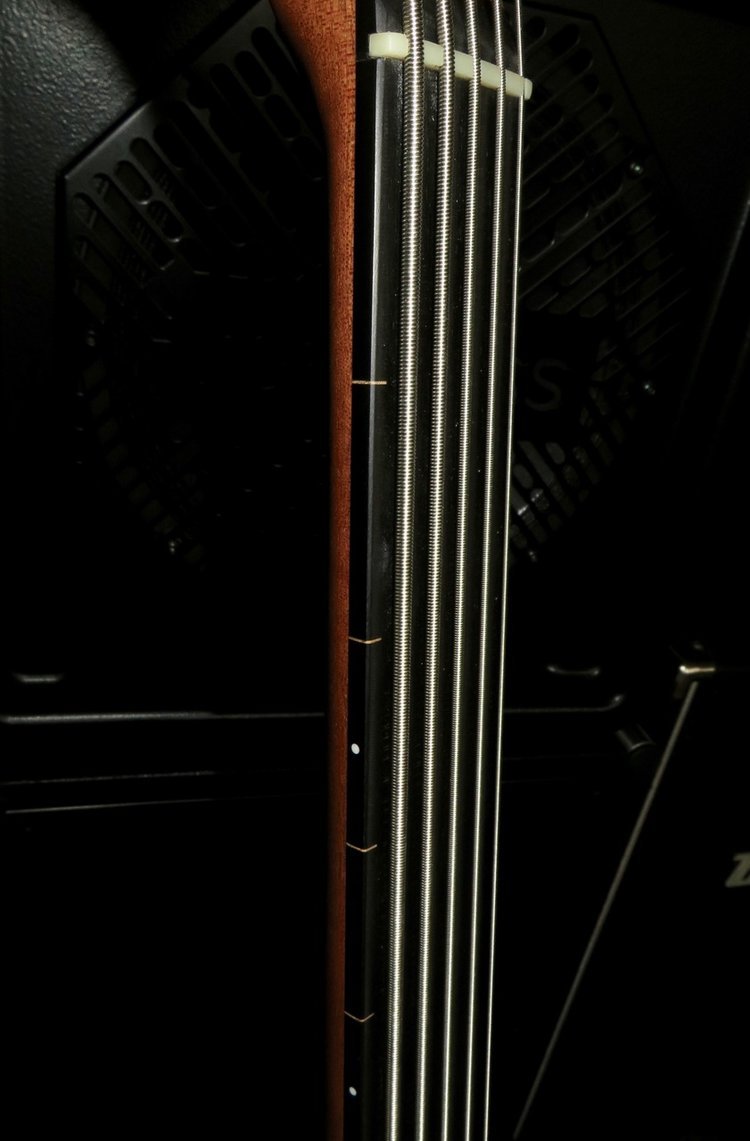Fretless Bass
The direct, pure bass sound, fingers pressing the strings on the fingerboard, no frets in between ...
Tradition
In the Seventies, Jaco Pastorius put the fretless bass on the map. A very traditional fretless in the sense of Jaco has an alder body, a maple neck with a rosewood fingerboard and the right pickups, the bridge pickup being the most important. Equally important is the "Bent Bridge", which ensures the official tone and sustain.
We have fretless fingerboards for every taste: ebony is used on the classical double basses. It's tough and offers many years of playing fun. I, on the other hand, prefer rosewood, it sounds a bit warmer in the low mids, but it's not as hard and resistant as ebony. (If required, we can also make a maple fingerboard, protected with extra hard boat varnish.)
Jaco Pastorius took out the frets of his 1962 Fender Jazz Bass and filled up the gaps with contrasting wood filler in the early seventies. He applied several layers of boat laquer on the neck and sanded it to a smooth surface. The rest is history.
In this tradition, we can make lines for better navigation and intonation on the fingerboard, which are embedded in the wood instead of the frets. Light or dark lines are possible. On request, we apply special boat paint on the fretless fingerboard. This gives a super-nice feel, and the fingerboard will last longer.
Frets out
Introducing the Hot Wire „Wazz“ Fretless Bass! Our customer requested a W-Bucker on a Jazz-Style Body. That´s where we got the idea for the name.
The khaya mahogany body puts out a warm, round tone. The sapeli mahogany neck adds even more warmth and depth to the sound. The ebony fingerboard stands for clarity and definition. Position markers on the side make sure you won´t get lost. We introduced the Hotwire W-Bucker pickup ten years ago, since then it is known for its high performance and big tone. We added a serial-single coil-parallel switch for a variety of voicings. Passive controls are volume and tone. The matte finish brings out the wood structure, and the neck feels like an old friend. So you can play deep grooves for hours on end.
An alder body, rosewood fingerboard, passive HotWire soapbar with coil-tap - that's what you need for the fretless sound. Not more. Just listen to Simon Zauels: he knows how to do it.
A very traditional fretless in the sense of Jaco has an alder body, a maple neck with a rosewood fingerboard and the right pickups, such as our Vintage Jays. Also important is the "Bent Bridge", which ensures the official tone and sustain.
We have fretless fingerboards for every taste: ebony is used on the classical double basses. It's tough and offers many years of playing fun. I, on the other hand, prefer rosewood, it sounds a bit warmer in the low mids, but it's not as hard and resistant as ebony. (If required, we can also make a maple fingerboard, protected with extra hard boat varnish.)
But there are variations on the topic: For a particularly fat finger sound, we like to use mahogany for the body. Sounds really incredible. This is where our double jazz pickup comes in: a fat-sounding vintage HotWire humbucker switchable to single coil for "traditional" sounds, passive volume and tone knobs - nothing more than super fretless tone.



